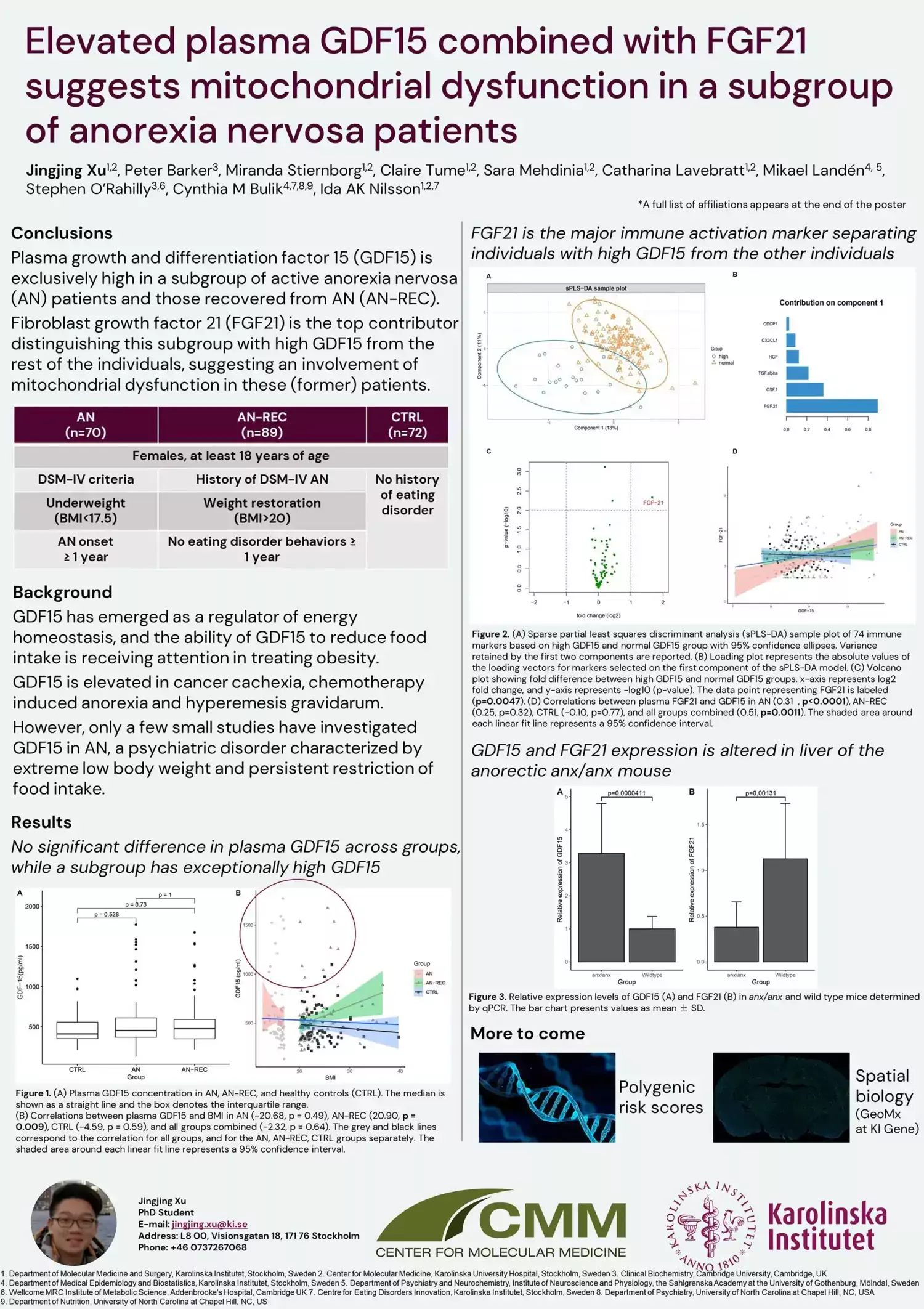Poster 10 - Jingjing Xu, Translational Psychiatry
MMK Department's Day 2024

Jingjing Xu, Translational Psychiatry
Title: Elevated plasma GDF15 combined with FGF21 suggests mitochondrial dysfunction in a subgroup of anorexia nervosa patients
Scientific Summary
Background: Growth and differentiation factor 15 (GDF15) has emerged as a significant regulator of energy homeostasis. The ability of GDF15 to reduce food intake is among others receiving attention in treating obesity. In addition, GDF15 is elevated in cancer cachexia, chemotherapy-induced anorexia, and hyperemesis gravidarum. However, only a few small studies have investigated GDF15 in anorexia nervosa (AN), a psychiatric disorder characterized by extremely low weight and persistent restriction of food intake.
Materials and methods: We analyzed the plasma concentration of GDF15 in females with active AN (n = 70), recovered from AN (AN-REC, n = 89), and normal weight healthy controls (CTRL, n = 72). Feature selection was used to identify the top contributors from a selected set of immune activation markers differentiating individuals with high GDF15 (> 800 pg/ml) from the remaining ones (< 800 pg/ml) in the AN and AN-REC groups. Finally, we analyzed the expression of GDF15 and fibroblast growth factor (FGF21) in the liver of the anorectic anx/anx mouse.
Results: Although no significant difference in plasma GDF15 concentration was seen across the three groups, a subgroup of study participants with a significantly higher proportion from the AN groups, had high GDF15 plasma concentrations. Sparse partial least squares discriminant analysis (sPLS-DA) identified six immune activation markers that distinguished AN with high GDF15 from the rest of the individuals, with fibroblast growth factor 21 (FGF21) being the most important contributor. Moreover, FGF21 plasma concentration was significantly higher in the group with high GDF15, suggesting an involvement of mitochondrial dysfunction. Supporting this we report elevated GDF15 expression, while FGF21 is reduced, in the liver of the anorectic anx/anx mouse previously reported to present mitochondrial dysfunction.
Conclusion: The significantly higher proportion of AN patients with high plasma concentrations of GDF15 indicates that some AN patients may benefit from intervening with plasma GDF15 to stimulate food intake and renourishment. With FGF21 also being higher and a suggested ‘driver’ of the higher plasma GDF15 in this subgroup of AN individuals, mitochondrial dysfunction should be further explored.
